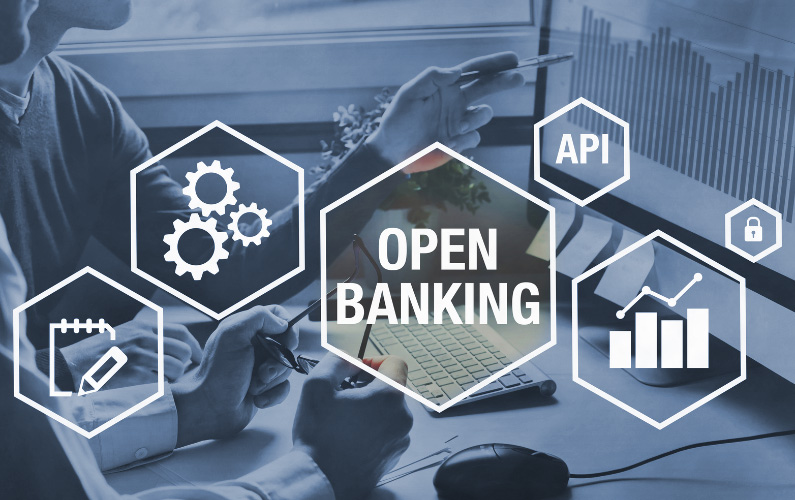View a one-page infographic summary of the analysis
Open banking – a system that provides third-party access to financial data through the use of application programming interfaces (APIs) – arrived in the UK in 2018 as an initiative aimed at boosting competition in financial services.
The problem
Five years on, open banking remains relatively niche in terms of uptake. The Financial Conduct Authority (FCA) reports that there are just over “7 million active users”, which is a long way short of the total the industry had hoped for. Even though all the major banks and fintechs in the UK have introduced open banking offerings, their use is dwarfed by more traditional payment options like cards or direct debits, mostly because of a lack of consumer awareness of the technology’s benefits.
In fact, the slow adoption became the central topic of the media debate around open banking, as our analysis of 1,699 English-language articles published in the last 6 months found:
In this context, big legacy brands like HSBC, Natwest, Barclays and Lloyds focused their PR efforts on promoting new features such as account aggregation and multi-account visibility in an attempt to lure clients into the open banking ecosystem. This helped them become some of the most influential companies in the debate:
Outside of the legacy banking sphere, organisations like Revolut, Monzo, Zopa, Mastercard and Innovate Finance featured in the debate by actively participating in initiatives like the Open Finance Coalition to position the UK as a global leader in the financial innovation space.
However, we found that the debate around open banking often fails to highlight its actual benefits, and both traditional banks and fintechs have generally fallen short in effectively showcasing how and why consumers can significantly benefit from this innovation.
How media analytics can transform open banking communications
To boost awareness and effectively communicate the consumer advantages of open banking, PR and communications professionals need to go beyond the mere promotion of their tools – tools that can often seem superfluous – and instead position these offerings in specific contexts as solutions to real-world financial challenges.
Against this backdrop, media analytics can be invaluable, particularly through the use of white space mapping, to identify untapped opportunities and narratives.
White space mapping deep-dives into a set of topics to pinpoint areas where there is little to no media coverage or conversation, offering a sort of “blank canvas” for strategic messaging. By filling this media “white space,” not only do PR and comms bring attention to their organisation’s offerings, but they also contribute to shaping the conversation around the issues of the day. This targeted approach ensures that the messaging is both relevant and impactful, addressing gaps in public understanding or awareness while positioning the organisation as a thought leader.
Three white spaces to fill
Our media analysis has identified three white spaces—untapped topics or narratives—that are gaining traction in the broader financial services conversation, presenting both legacy banks and fintechs with valuable opportunities to craft effective open banking campaigns.
- Cost-of-living crisis: While 95% of consumers are worried about the cost of living and are taking on more debt to cope, the majority remain unaware of how open banking can offer relief in these trying times – and companies aren’t talking about it either. Therefore, PR strategies should focus on educational campaigns that demonstrate how open banking can provide practical solutions for budgeting, saving, and even finding affordable credit options. Real-world case studies should be highlighted to showcase the immediate, tangible benefits and even delve into the broader societal advantages of open banking, such as its ability to identify financial vulnerabilities and trends in economic hardship, thus providing preventative solutions.
- Financial inclusion: The issue of financial inclusion – the availability and equality of opportunities to access financial services – provides a compelling narrative for PR and communications professionals to leverage. Campaigns should strategically centre on the transformative role open banking plays, targeting not just the “unbanked” but also the “underbanked” and “underserved” populations. Given that these categories span across both developing and affluent nations, and include key economic contributors like micro-businesses and freelancers, the messaging has global relevance. PR teams can craft compelling stories, testimonials, and case studies to demonstrate how open banking is more than a fintech trend; it’s a social equalizer.
- Financial fraud: In a landscape where financial fraud inflicted over £1 billion in damages to UK consumers, PR teams could pivot their campaigns to spotlight how open banking inherently safeguards against payment fraud. The narrative could emphasise how open banking is not just a convenience but a safeguard, designed with layers of security that far exceed traditional payment methods. Story angles could include customer testimonials highlighting the peace of mind brought by Strong Customer Authentication (SCA) and expose-style pieces that contrast the vulnerabilities of traditional banking with the robustness of open banking. Infographics and easy-to-digest videos could visually break down complex topics like “What is SCA?” or “Why Open Banking is Safer by Design,” making them more accessible to a lay audience.

